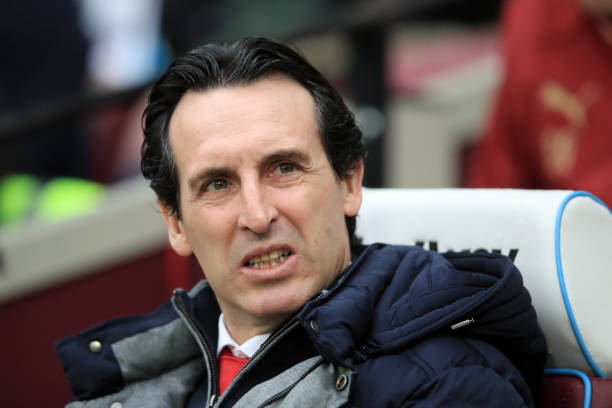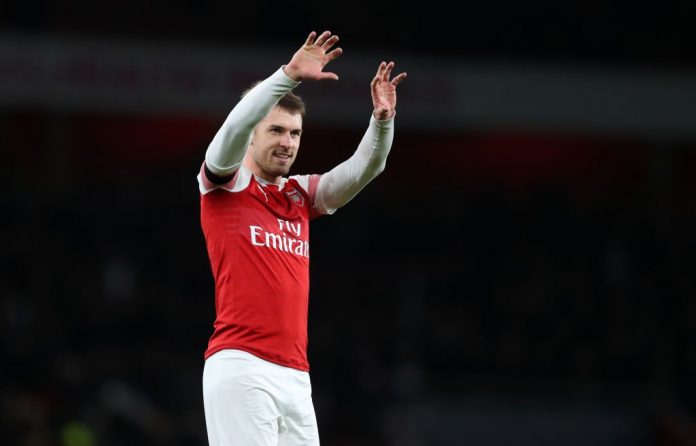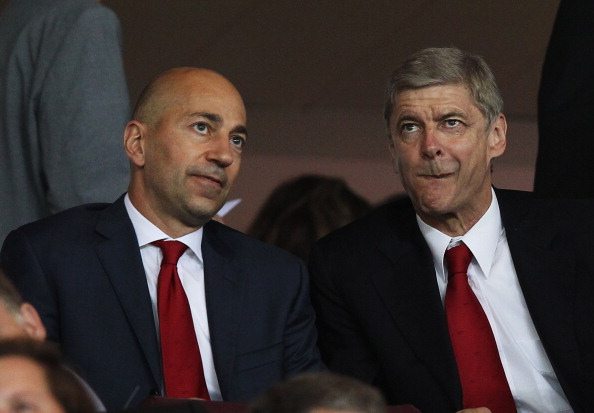Despite being one the best run clubs in the country for the majority of the last century, under the watch of Ivan Gazidis, Arsenal seriously dropped the ball at exactly the wrong time.
The rules

Having written at length about the state of the Arsenal first team squad and the commensurate need for investment, I’ve seen and heard a lot of comment about how the Liverpool game and the rush for fourth may encourage Stan Kroenke to spend some of the Wall-Mart billions.
Unfortunately, I’m here to give everyone a reality check. And not just the obvious one about Silent Stan’s reluctance to spend. The fact is, even if KSE wanted to go full Abramovich or Sheikh Mansour, it simply isn’t possible, due to regulations that govern football clubs in the Premier League.
Apologies to readers who know this, but most Arsenal fans, and indeed football fans as a whole, don’t.
You see, while Uefa’s FFP has shown itself as toothless and corruptible as you’d expect given the nature of that governing body, the Premier League’s version, Short Term Cost Controls (STCC), has shown itself to have a little more teeth, although typically in ways that benefit some parties more than others.
Perhaps intended to work in tandem with UEFA’s model that deals with overall spending vs income, the EPL version is rather more specific. The Premier League recognised that it was wage inflation rather than transfer fee inflation that was posing the greater risk to the stability of football clubs – just ask Leeds United, Q.P.R and Sunderland fans. The recently implemented regulations (which into effect in 2016/17) seek to stop these spiralling out of control, particularly against the backdrop of TV money accelerating the increase in player wages. These regulations were also influenced by the consistent proof that at all but the obscene levels of transfer expenditure, it is the amounts of money spent on wages rather than on initial signings that has the greater correlation with league position.
Accordingly, rules were introduced to put a cap on increases in wage expenditure, in a manner that attempted to be fair across the board.
This was laid out in a number of ways:
- STCC rules only apply to clubs with an annual wage bill of more than £67m (including salaries, bonuses and image rights).
- Using the previous year’s wage bill as a baseline (unless the club wishes to use 2012/13 season – which almost none do given how much wages have increased), these clubs cannot raise wages by more than £7m per annum (or a set figure if using the 2012/13 baseline that stood at £19m in 2016).
- These rules are directly related to centralised TV revenue distribution. So, if a club demonstrates its wage increases are financed by its ‘own revenue’, they can add to this £7m a year limit.
- ‘Own revenue’ includes player sales, commercial/sponsorship deals, match day income and UEFA & domestic prize distributions.
At a first glance, this all seems eminently sensible. If you are well managed, you should do better on the pitch, and as a result, generate more commercial revenue, match day income and prize money. Being well managed off the pitch should increase player sales revenue and other commercial income. As such, it is a very sensible model.
The problem is, these rules were introduced after the horse bolted in terms of encouraging a level playing field and preventing the abuse of the league’s competitive structure by vast owner financial input, thus inflating wage figures. By finally realising that the ‘greed is good’ mantra has its dangers even with the billions pumping into top-flight English football, the Premier League has cemented the new hierarchy formed by the uber-spenders of recent years.
5Salary Straightjacket

The other issue that has seriously limited Arsenal’s ability to offload players for market value (or in some cases, at all) has been our high wages.
For a long time this was the result of Arsene Wenger’s pseudo-socialist wage structure, where the gaps between tiers of players pay packets was kept to a minimum. While this has some logic for internal harmony, it does mean that the likes of Jenkinson and Ospina won’t move on unless the transfer fee takes a hit in order for the buying club to afford the wages.
The broader practical implications of this aren’t so big if your top earners are happy to be paid amounts that fit into that structure, as if they buy into it, it keeps their wages lower.
However, as we know, football has changed and wages have exploded, especially for higher-profile players. Accordingly, so has Arsenal’s wage bill for playing staff, while still being saddled with those long-contract, high earning fringe players of the Wenger harmonious utopia.
In the pursuit of remaining competitive, Arsenal haven’t just splashed out on transfer fees. Buying more established players means higher wage demands, and when you are no longer guaranteed Champions League participants, those demands get higher still. Does anyone believe that Aubameyang wouldn’t have been willing to take a slightly smaller wage packet had Real Madrid been the ones paying it? Add to that, the desperation to keep players when other high profile stars have left, and you end up with the perfect situation for Theo Walcott’s £140k p/w salary or the £350k p/w (that’s £18m a year) Arsenal felt compelled to agree to give Mesut Ozil after it became clear Alexis Sanchez was hankering for either side of Manchester.
The worst thing about the Ozil contract is that it wasn’t done for footballing reasons, despite his qualities as a player. It was done to save face. Having backed themselves into a position where one star player was going to a rival for a fraction of his value, to lose their only other global star on a free would look like terrible weakness. It would have destroyed any lingering confidence the fans had in the club, its management and executives at what was already a fractious time with revolution firmly in the air.
We’ll never know if it was a parting vanity for the manager, a reputation protector for the CEO or a dictat from the removed parties on high, but either way, making a £60m commitment to a player approaching his thirties when you know a new manager is coming in sooner rather than later is a risk. And one the club is on the hook for after both Wenger and Gazidis have left.
The desire to wrest some control over the club’s inflated wage bill has already forced the club to part with popular high earners for reduced fees when it became clear they weren’t in Wenger’s long-term plans. This may have ultimately cost the club in the long run, as despite the benefit of getting Giroud and Walcott off the wage bill, one can’t help thinking that having both as options on the bench when totally dominating against 10-man Atletico Madrid in the Europa League semi-final might have significantly impacted on the result, our chances of making the Champions League for 2018/19 and our medium-term financial well-being. Again perhaps penny wise, pound foolish.
Even recent attempts to reduce the wage bill to give us greater flexibility have been undermined by subsequent actions. Last season we offloaded Walcott, Sanchez, Giroud, Oxlade-Chamberlain, Szczesny, Gabriel, Debuchy, Gibbs and Coqeulin. That’s about £700k p/w, as well as whatever was covered by the loans of Lucas Perez, Joel Campbell and Carl Jenkinson (probably another £140k p/w+).
So far, so good, in terms of wage reduction.
But this was done away with, initially in part by the high wage Bosman signing of Kolasinac, and long-needed boost of quality of up front in Lacazette. Some of the above departures were forced to meet the wage demands of Aubameyang, though the return has justified it. In addition, however, prior errors were compounded, as rather than the wage flexibility and likely £130m we could have recouped had we sold Sanchez and Ozil when they didn’t sign on the dotted line in time, we first swapped Sanchez for the then higher earning Mkhitaryan, and more than doubled Ozil’s manageable £140k p/w salary to £350k p/w.
So that’s 11 players out – not including Jenkinson who is still here (all experienced internationals) and 5 in for a break even in transfer fees and an increase in wage expenditure of about £100k p/w. That’s about ¾ of a season’s STCC wage increase flexibility for 6 fewer players in the squad.
This summer saw a further number of high earners depart (Mertesacker, Cazorla, Wilshere, Lucas Perez), but in all likelihood, their wages were all consumed by the summer arrivals and contract extensions for Iwobi, Xhaka etc.
So as well as a total lack of transfer revenue putting the mockers on our transfer kitty and undermining our ‘own revenue’ under STCC, the mismanagement of our wage bill means that there is only one other possible route to prevent the club being gridlocked by the Premier League salary cap rules.

